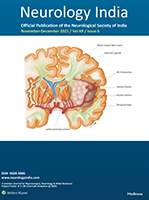Kayaking Palsy

Available from: https://www.neurologyindia.com/text.asp?2021/69/6/1895/333512
Dear Sir,
A certified neurologist (AR), 32 years, decided to try kayaking while on vacation, with no prior experience. After a tour of five hours, he noticed weakness in the right hand (could not open a bottle of water) without any sensory symptoms. He was examined by his wife, also a certified neurologist (PK), which revealed (a) loss of little finger adduction, (b) moderate weakness of the interosseous muscles with loss of second finger abduction, (c) positive Froment's sign in the right hand, (d) fasciculations in the first interosseous muscle, and (e) no sensory deficit. He could not turn keys in keyholes, had difficulties using a spoon, and could not hold the phone between the first and index fingers.
A diagnosis of ulnar neuropathy in the Guyon's canal was suspected – the so-called “cyclist's palsy” or “handlebar palsy,” a condition associated with trauma and/or repetitive stress during long-distance biking. It usually involves branches of the ulnar nerve passing through or immediately after the ulnar tunnel. In our case, the most probable pathology was an injury to the deep motor branches of the ulnar nerve, sparing the sensory portion.
The symptoms progressively improved in the course of two weeks, with nonsteroid anti-inflammation drugs used for the first 2 or 3 days, followed by ipidacrine, vitamins B1 and B6, and pentoxifylline per os (a purely empirical therapeutic regimen). This condition is usually self-limiting, does not require medication (with one major exception – plenty of rest), and goes away on its own, yet the nature of symptoms may feel worrisome and even menacing, especially to one of a medical profession.
A somewhat similar case was described in the New England Journal of Medicine, which was called “paddler's palsy,” but the distribution of symptoms was linked to traction injury of the brachial plexus. Although benign, the absence of sensory symptoms in a pure motor deficit in a case of “kayaking palsy” may go unnoticed for long periods of time, leading to more nerve damage and delayed recovery.
Дата издания: 23.12.2021